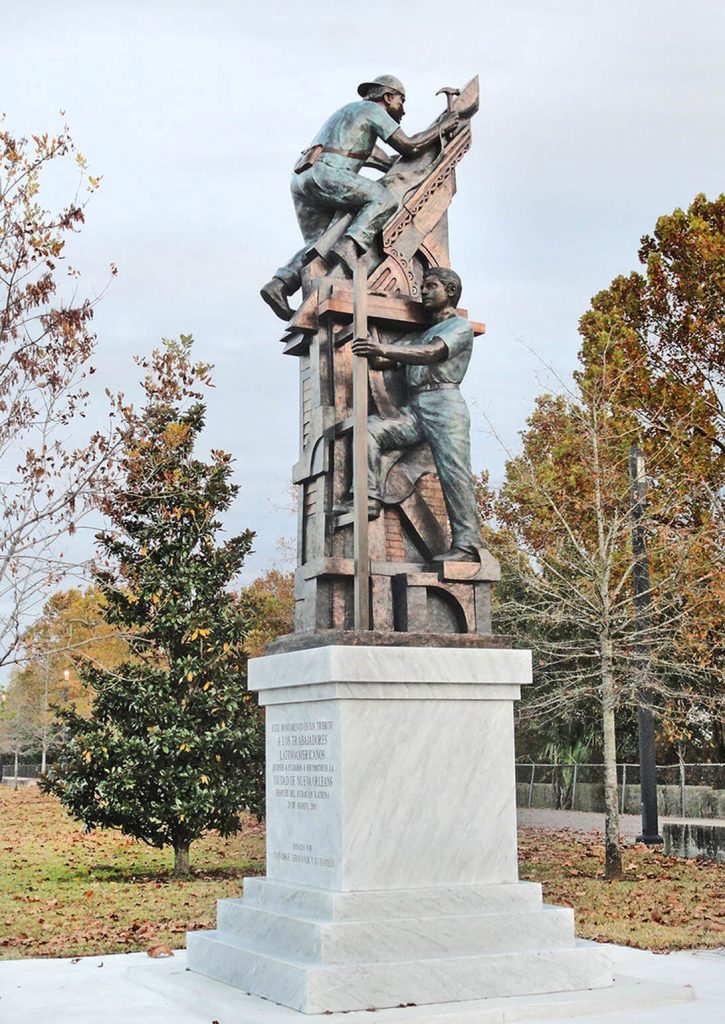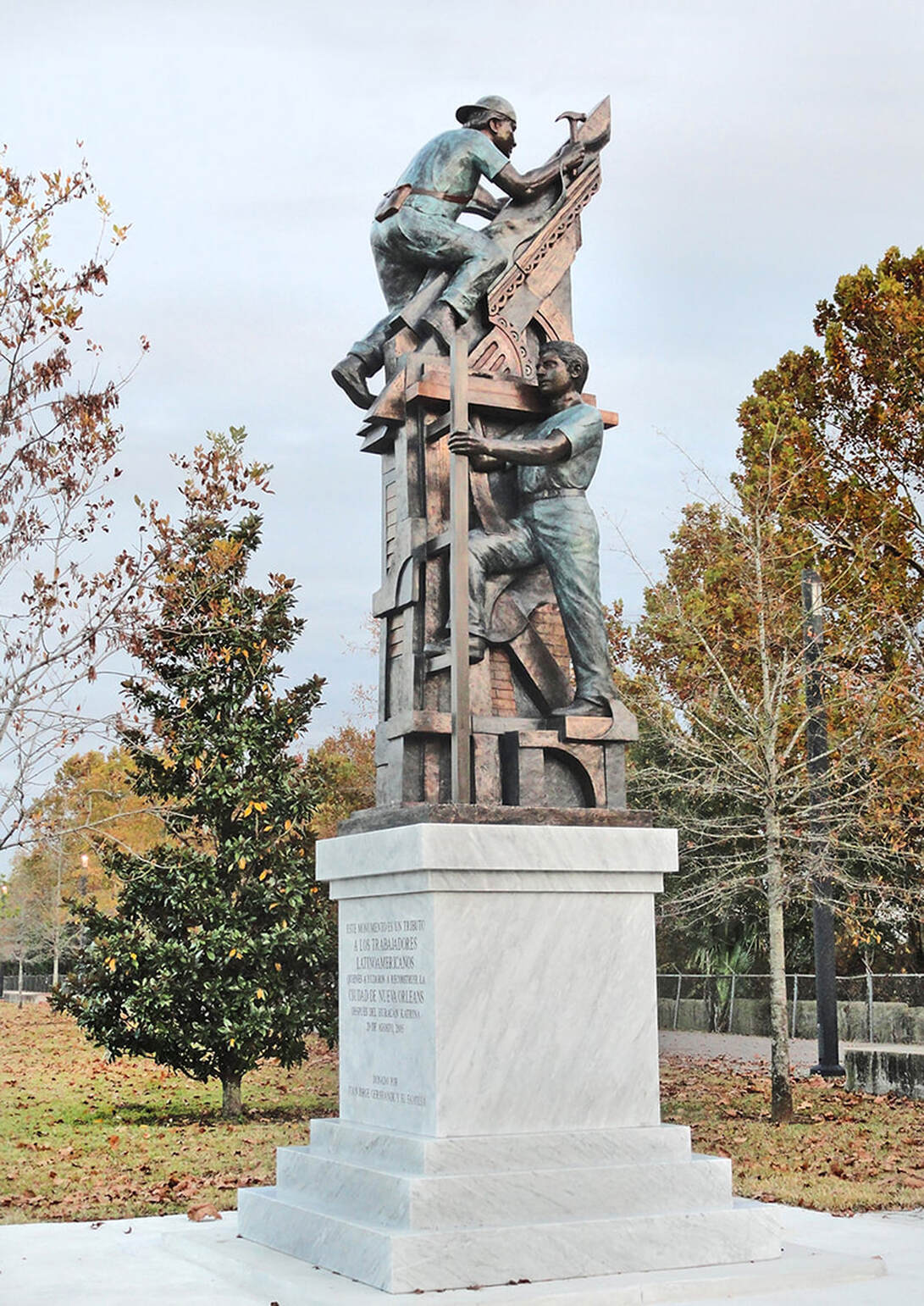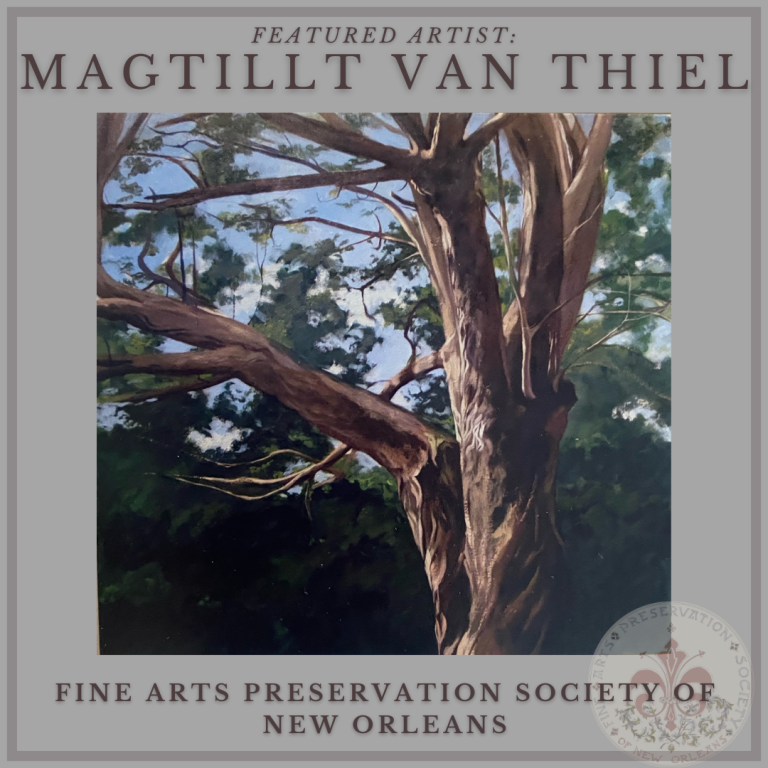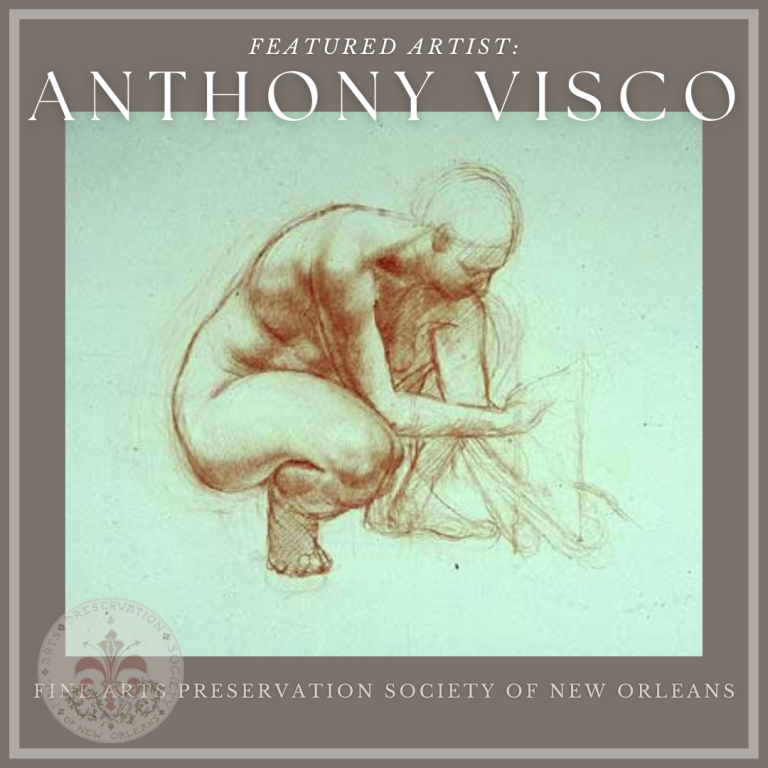
*This article was originally published by the French Quarter Journal in 2020. https://www.frenchquarterjournal.com/archives/franco-alessandrini-italian-master-sculptor-and-his-new-orleans-studio
Franco Allessandrini: Italian Master Sculptor and His New Orleans Studio
By Saskia Ozols
Franco Allessandrini maintains a vibrant studio, gallery, and practice in New Orleans’ historic Central Business District where he has lived and worked for the past four decades. Although he commutes to Italy a few times a year he considers New Orleans “The best place to be.”
His influence and aesthetic punctuate the city with dramatic multi-figure compositions, portraits, and monumental mosaic work. Allessandrini works in a variety of media and switches from one visual language to another with unmatched fluidity. He is a painter, sculptor, draftsman, printmaker and designer. His varied breadth with visual means inspires appreciation of his work as a contemporary renaissance master of modern media.
A classically trained sculptor who grew up and studied in Italy, Alessandrini’s work connects New Orleans’ unique culture with the international community. There are few sculptors in New Orleans capable of the understanding and expression of form as he orders them. In addition to mastery of technique, many of his works address contemporary yet timeless topics such as immigration, integration, and the nature of man. His overall aesthetic is one that New Orleans is fortunate to engage; it combines impeccable strategies for design and process with issues of local, regional, and global relevance.
An Alessandrini Art Walk Along the River
A monumental Byzantine mosaic, New Orleans, is my first stop. Permanently installed in the Convention Center Along the Mississippi River, this piece is well worth the hunt and stuns at first glance. New Orleans offers a larger than life image that captures the spirit of the city with a technique refined in 4th century Ravenna. Alessandrini designed the masterpiece in its entirety, and the incorporation of this antique art form with New Orleans culture creates a feeling of devotion for the multi-faceted identity of the city.
Rendered with thousands of stones in twilight colors reminiscent of aging frescos and the humid light of the Mediterranean, the scene as a whole inspires meditation. The vast image is a collage of sorts and includes fragmented renderings of local flora and fauna, artistic activities with accompanying instruments and tools; paintbrushes, palette, and performing musicians. Endless glasses of wine, candles, carnival masks, architectural elements and fractured constructivist-like divisions of light anchor the dynamic movements depicted. Each form moves seamlessly into another allowing the viewer to create their own narrative. The mosaic tiles interact with the spiraling compositional elements in a way that vibrates with the motion of the city. The familiar sounds, smells, and textures forever iconized and set in stone.
A little further along the River, and just across Canal St. is Alessandrini’s large marble Monument to the Immigrant. It sits with a noble gravity overlooking the Mississippi on the riverfront in Woldenberg Park. The work offers a gentle reminder of the many cultures that make New Orleans unique and offers contemplation on their cultural contributions. Placed in the exact spot where many immigrants arrived in the French Quarter so long ago the monument also sits as a memorial to lives forever transformed, adopted, and embraced by the city of New Orleans.
The overall composition creates a large dynamic triangle, a floating figure reaching over the waters with a family packed for travel. The guardian like figure and the huddled family below face opposite directions and offer juxtaposition between stillness and movement, the known with the unknown, of blind faith and hope with postures of disillusion. From a distance this piece beckons as a wind blown spirit protecting the waters, almost a figurehead missing its boat, guiding the family toward safety, or bidding a last goodbye to an abandoned homeland. Monument to the Immigrant speaks to the history of New Orleans while simultaneously suggesting ancient mythological and religious narratives of cultural displacement as well as the ongoing immigration crisis of today.
Even further along the river, in Crescent Riverfront Park stands Alessandrini’s bronze and marble Monument to the Latino Worker, a heroically scaled thank you note to those that helped rebuild the city after Katrina. This piece includes a similar yet more specific message as the Monument to the Immigrant and depicts workers specifically of Latino descent. Figures include men, women, and children. They are represented mid stride on ladders, wielding hammers and other tools going about the hearty task of repairing a community after devastation. The multifigure composition is depicted on the roof of a house, above eye level and allowing the viewer a worm’s eye view toward what most might consider common laborers. The use of this compositional device gives the workers a degree of importance usually reserved for depictions of gods, rulers, or heroic figures. In this case Alessandrini assigns heroic status to the Latino worker through his reference to the classical language of composition.
Adorning the entrance to the St. Louis Cathedral in Jackson Square, also steps from the Mississippi River, is Alessandrini’s Portrait of John Paul II. An over life-sized marble depicting the Pope with two young children and a single magnolia flower. The young boy holds a bud about to bloom, the young girl with calmly folded hands. This work commemorates the visit of the Pontiff, and quietly beckons the public into the Cathedral.
Within close proximity to another religious work and a short walk from St. Louis Cathedral stands the Ursulines Convent Museum. Alessandrini created a powerful series of hand carved marble sculpture depicting important figures in the history of the Ursulines. His devotional public work provides certain strength to the mystery of New Orleans and imagery contrasts obliquely yet equal in strength with his studio work.
A Studio Visit
The first floor of Alessandrini’s studio building functions as an exhibition gallery.
Constructed of immaculate polished white marble, the gallery presents finished sculpture, drawings, paintings, and prints. The space is airy, clean, and balanced with our New Orleans atmosphere on the grey rain filled day. Walking through the space, almost breathing the artwork in, a vertical, totem like sculpture draws us into conversation.
Rituals, is tall, reaching slightly below our eye level and hand carved from Carrera marble. It depicts an almost frightening combination of animal and human faces, newborns, and highly rendered genitalia. Each form is connected with the others by abstract flame and water shapes that lead the eye strategically from one moment to the next and back again. He explains that this piece is about religion, regeneration, sex, and the relationship between early pagan behavior with contemporary Christianity. He explains that this sculpture addresses the duality of man. Impossible to look away, the gaze upon this piece is embarrassing and enlightening at the same time. The work is a surprise and a jarring juxtaposition to the public works that align morality and the ethics of human behavior in a more traditional way.
His works in progress, paintings, and drawings hang throughout the gallery, the adjoining space, and populate his working studio on the 3rd floor. They bring light and life to an authentic antique building in a state that rarely still exists in today’s environment of homogenization. The interior of his studio provides a beautiful glimpse into what most historic French Quarter buildings looked and smelled like before the mass bleaching of gentrification.
As we reach the top of the last flight of stairs, the humidity greets us as light pours through open doors and windows- illuminating a vast trove of in progress and stored artwork. Among peeling wallpaper, shapes of fallen plaster, old beadboard influenced by the patina of age, water marks left by humidity, rain, and more sit rolls and rolls of canvases off of their stretcher bars awaiting the right collector or curator to share with a new generation. Piles of sketches, studies, unfinished monumental works on swinging structures three deep in front of walls…tables with palettes covered in paint, brushes, old hand made screen printing supplies that he created himself. All of the stuff of art, of creation, of life.
Amidst the whirlwind of chaos and creativity Alessandrini sits with the gravity of silence, stillness and calm like the eye of a hurricane. He observes quietly from a large black chair in the center of everything. A gratefulness washes over me as I consider our conversations on beauty, on art, on man and on representation. His work transcends culture, language, and form. He is an artist in the truest sense, defying the boundaries of representation, style, and media. A living treasure to the New Orleans art community, the French Quarter and beyond.


